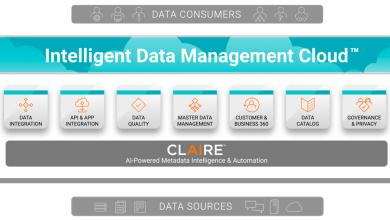
It is a fact – disasters can strike at an instant, without warning, leaving destruction and chaos in their wake. From devastating earthquakes to catastrophic floods, the world has seen its fair share of tragedy in recent years. Just last year, Pakistan was hit with one of the worst floods in its history, leaving millions homeless and thousands dead. And let us not forget the ongoing conflicts in Ukraine, Ethiopia, Yemen, and other regions that continue to wreak havoc on innocent lives.
To make matters worse, evidence shows that climate change is only amplifying these threats to global peace and security. In the past two decades alone, the world has experienced over 2,500 disasters and 40 major conflicts, affecting more than 2 billion people.
These disasters and conflicts are indications that they can happen at any moment, to anyone or in this article’s case, any company.
Did you know that nearly two-thirds of small and mid-sized businesses impacted by natural disasters fail to reopen within 12 months? That is right – according to the Federal Emergency Management Agency, 40% never reopen at all, while an additional 25% close their doors within a year. It is a sobering statistic that highlights the critical importance of developing a solid business continuity plan, especially when it comes to recovering IT assets.
For years, smaller organisations have been left out in the cold when it comes to effective disaster recovery solutions. The high cost of entry for maintaining a second, geographically separated data centre has made it difficult for many businesses to justify the investment. As a result, disaster recovery often consists of little more than a backup server under someone’s desk or an external hard drive plugged into a PC. The prevailing attitude is, “If something goes wrong, the IT team will figure it out and fix it eventually.”
But will they? Recent disasters have shown us a hard truth that we should have already known: those who are impacted by a disaster may not be able to immediately return to the office to rebuild IT infrastructure. Instead, they are often more focused on ensuring the safety and well-being of their loved ones. Even if they were willing and able to come back to work, they may face impassable roads, incapacitated public transit, and a lack of essential services like electricity and internet access.
A hero is needed to help companies safeguard their data in the event of an unprecedented attack or an unforgiving disaster.
A Contingency Plan
Lying in the shadows, disaster recovery is like an invisible superhero, ready to jump in when disaster strikes and save the day for businesses. It is the ultimate contingency plan that ensures the IT systems that support critical business functions are back up and running as quickly as possible after a catastrophic event. And with more and more companies operating in the cloud, disaster recovery planning has become an absolute necessity.
Let us face it, an IT “disaster” could come in any shape or form, be it natural disasters or cyber attacks that wreak havoc on your network. It could even be a simple mistake by one of your employees that causes critical data loss, but with a well-designed disaster recovery plan, your business can stay ahead of the curve and minimise the impact of these disruptions.
Having a robust disaster recovery strategy is not just good sense; it is essential for any business that wants to survive and thrive in today’s fast-paced digital landscape. The ability to recover quickly from disasters and resume core operations is critical for maintaining customer satisfaction, brand reputation, and revenue streams. In other words, disaster recovery planning is not just a luxury; it is a must-have for any business that wants to stay ahead of the curve.
These days, the cloud provides businesses, big and small, with the capabilities of a well-crafted disaster recovery (DR) plan, at a more affordable price. Cloud DR can safeguard valuable resources by storing them on a remote off-site cloud server, ensuring continuity in the event of a disaster.
 The power of cloud technology enables rapid recovery, high adaptability, and exceptional availability, allowing businesses to personalise cloud DR solutions that best suit their individual needs. Compared to traditional disaster recovery methods, cloud DR is an uncomplicated, easily managed, and user-friendly option.
The power of cloud technology enables rapid recovery, high adaptability, and exceptional availability, allowing businesses to personalise cloud DR solutions that best suit their individual needs. Compared to traditional disaster recovery methods, cloud DR is an uncomplicated, easily managed, and user-friendly option.
Vish Phaneendra, Senior Director of Technology, APJ at YugabyteDB highlighted some of the benefits of cloud-based backup solutions such as it being:
- more scalable,
- easier to manage, and
- provide better data redundancy.
 However, nothing is without its downside. One of the biggest disadvantages of cloud-based disaster recovery according to Andy Ng, Vice President and Managing Director for Asia Pacific and South Region at Veritas Technologies, is that you have little control over the process and can only trust your service provider to implement the disaster recovery plan in the event of an incident.
However, nothing is without its downside. One of the biggest disadvantages of cloud-based disaster recovery according to Andy Ng, Vice President and Managing Director for Asia Pacific and South Region at Veritas Technologies, is that you have little control over the process and can only trust your service provider to implement the disaster recovery plan in the event of an incident.
At the same time, organisations must comply with any new local regulatory measures associated with storing their data offsite. However, as of now, the cloud is helping to bridge the gap between backup and disaster recovery.
Thinning Lines Between Backup and Disaster Recovery
Everyone will agree that the cloud has been a game-changer for data protection, backup, and disaster recovery. As more organisations adopt cloud services, it is becoming increasingly challenging to draw a clear line between backup and disaster recovery.
 Both Stephen McNulty, Senior Vice President, Asia Pacific, OpenText and Justin Chiah, General Manager, Data Services and Storage for Asia Pacific, HPE agree that the first thing to note is that previously, backup and disaster recovery were two distinct processes with differing objectives, but now they are interconnected more than ever — and increasingly so, with the advent of cloud technology.
Both Stephen McNulty, Senior Vice President, Asia Pacific, OpenText and Justin Chiah, General Manager, Data Services and Storage for Asia Pacific, HPE agree that the first thing to note is that previously, backup and disaster recovery were two distinct processes with differing objectives, but now they are interconnected more than ever — and increasingly so, with the advent of cloud technology.
Back in the day, backup solutions were mainly concerned with safeguarding data in a single location, while disaster recovery strategies focused on restoring entire IT systems and applications following a disaster. However, with the rise of the multi-cloud era, the combined force of the two helps organisations ensure that the most up-to-date data is available and can be quickly recovered to ensure business continuity amid disasters.
Today, with rapid cloud adoption, we are increasingly seeing overlaps in techniques and solutions for backup and disaster recovery — thereby blurring the lines between the two. For example, cloud-based backup solutions might allow for real-time data replication and synchronisation to reduce the time gap between backups and minimise data loss during recovery. This aligns with the objectives of disaster recovery rather than backups.
 Paul Simos, VMware Vice President and Managing Director of Southeast Asia and Korea mentions that at the same time, cloud-based disaster recovery services enable organisations to replicate their entire IT infrastructure to the cloud. This means that in the event of a disaster, such as hardware failure or a natural catastrophe, businesses can quickly switch over to a replicated environment hosted in the cloud. “This ensures minimal downtime and enables organisations to maintain continuity of operations,” he said.
Paul Simos, VMware Vice President and Managing Director of Southeast Asia and Korea mentions that at the same time, cloud-based disaster recovery services enable organisations to replicate their entire IT infrastructure to the cloud. This means that in the event of a disaster, such as hardware failure or a natural catastrophe, businesses can quickly switch over to a replicated environment hosted in the cloud. “This ensures minimal downtime and enables organisations to maintain continuity of operations,” he said.
Nevertheless, we at Data and Storage ASEAN understand the importance of having a disaster recovery plan that includes a copy of your data, even if your SaaS vendor has a backup system in place. While the vendor may cover day-to-day risks, what happens if they face an extended outage, go out of business, or are involved in a legal battle? Your data ownership is irrelevant if you have no control or access to it. Therefore, it is crucial to have your own disaster recovery plan with your data on infrastructure under your control.
But what if your vendor does not have a backup or disaster recovery plan at all? In such cases, the entire responsibility falls on you, complicating the technical design and capabilities. Even if public cloud providers offer some protection against physical threats, the majority of the responsibility is on the customer. Thankfully, most cloud providers offer paid services for resilience, but the responsibility for designing, planning, and executing disaster recovery plans lies with you.
Resilience Is All That Matters
 For today’s organisations, resilience is paramount to a successful data protection plan, mentioned Lawrence Yeo, Enterprise Solutions Director, ASEAN, Hitachi Vantara. Being resilient entails having the flexibility to quickly restore data and applications to both existing and new cloud accounts.
For today’s organisations, resilience is paramount to a successful data protection plan, mentioned Lawrence Yeo, Enterprise Solutions Director, ASEAN, Hitachi Vantara. Being resilient entails having the flexibility to quickly restore data and applications to both existing and new cloud accounts.
We believe that traditional backup and disaster recovery systems focused on data centres are becoming outdated. Instead, we need a data protection strategy that prioritises IT resilience and can protect data anywhere, including public clouds and SaaS applications.
Resilience is the key to a robust data protection strategy as a slow disaster recovery or data restoration can negatively impact business processes. To be resilient, you need a data protection solution that encompasses backup and disaster recovery across on-premises and public clouds, allowing you to restore data and applications quickly, either to existing or new cloud accounts.
Organisations should carefully evaluate their needs and develop a robust backup and disaster recovery plan that leverages the benefits of the cloud while also mitigating the risks.
 Justin Chiah, General Manager, Data Services and Storage for Asia Pacific, HPE
Justin Chiah, General Manager, Data Services and Storage for Asia Pacific, HPE




